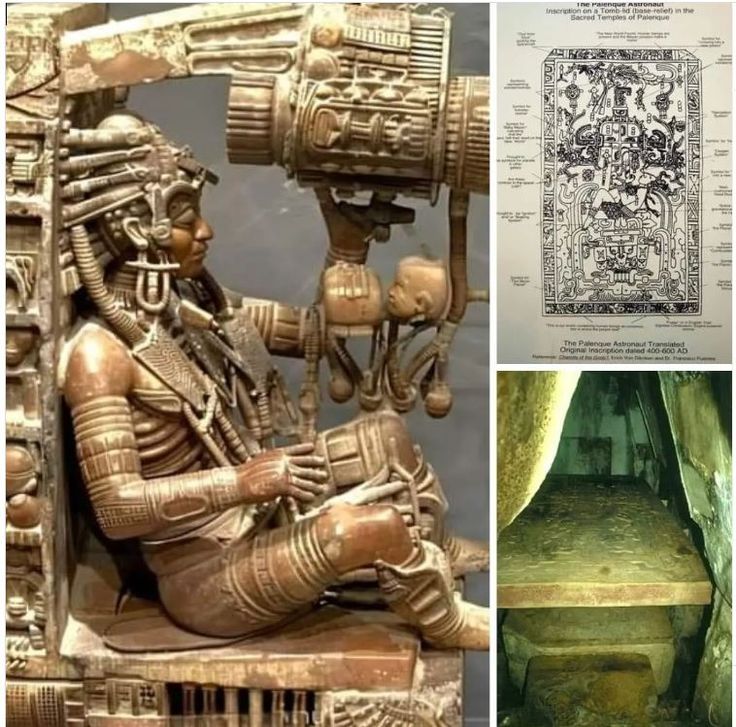The Mayan Palenque Astronaut is a captivating interpretation of an image found on the sarcophagus lid of K’inich Janaab’ Pakal, commonly known as Pakal the Great. A prominent ruler of the ancient Maya city of Palenque, this intricate carving, created around the 7th century AD, showcases Pakal in a complex scene filled with rich symbolism and Mayan cosmology. This artwork remains one of the most intriguing subjects in the field of Mesoamerican archaeology.

Table of Contents
ToggleThe Sarcophagus Lid: What Does It Depict?
The carved image on Pakal’s sarcophagus lid features the king seemingly suspended in a contraption, with his figure reclined and surrounded by a series of intricate symbols and objects. The arrangement of Pakal’s position, along with the visual elements that envelop him, has prompted some to speculate that he resembles a modern astronaut navigating within a spacecraft. This interpretation gained popularity through Erich von Däniken’s 1968 book Chariots of the Gods, where he suggested the possibility of extraterrestrial visitors influencing Mayan civilization.
Symbolism in Mayan Cosmology
In contrast to the extraterrestrial interpretations, many Mayan scholars argue that the scene should be understood through the lens of Mayan cosmology. In this view, Pakal is depicted as descending into Xibalba, the Maya underworld, representing his journey from life to death. The sarcophagus lid showcases the World Tree, a vital symbol in Maya belief that connects the heavens, earth, and underworld. Pakal’s position beneath the World Tree, accompanied by intricate designs that evoke cosmic elements, aligns with his esteemed status and emphasizes his role in the afterlife.

Celestial Connections
While the lid may not literally depict a spacecraft, it does possess significant celestial associations. The Maya were remarkably advanced in astronomy, capable of creating precise calendars and tracking celestial movements with great accuracy. The symbols etched onto Pakal’s sarcophagus could signify his alignment with the cosmos or his rebirth as a divine ancestor. Some scholars suggest that Pakal’s placement among celestial symbols indicates that he was perceived as an integral part of the cosmic order, a concept deeply rooted in Mayan ideology.
Continuing Fascination
The “Mayan Palenque Astronaut” theory persists as a popular topic within the realm of ancient astronaut lore, intertwining speculative imagination with archaeological enigma. Despite the prevailing consensus among scholars that the sarcophagus lid likely symbolizes Pakal’s descent into the underworld, the intricate details of the carving and its mysterious allure continue to ignite the imaginations of many around the globe. This enduring fascination reflects a curiosity about the unknown aspects of ancient civilizations and a profound respect for the sophistication of Mayan art, symbolism, and cosmic understanding.
The lid of Pakal’s tomb stands as a remarkable work of art and a reminder of the vast knowledge still to be uncovered regarding the worldview and spirituality of the ancient Maya. It serves as a powerful testament to the richness of Mayan culture and the enigmatic ways in which ancient peoples conceptualized their place within the universe. The Mayan Palenque Astronaut is more than just a fascinating image; it is a gateway into the complex beliefs and rich heritage of one of the most advanced civilizations in history.
